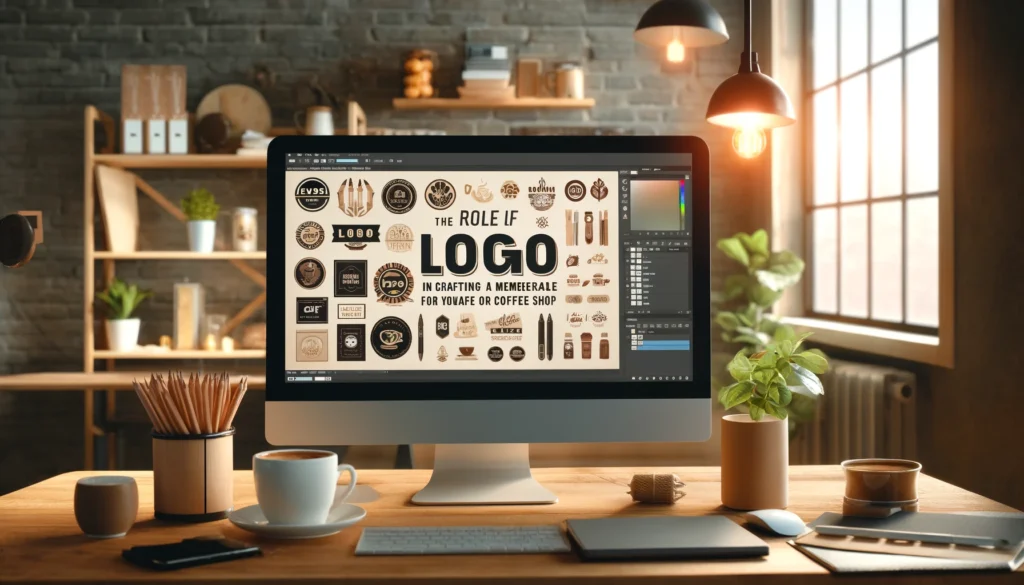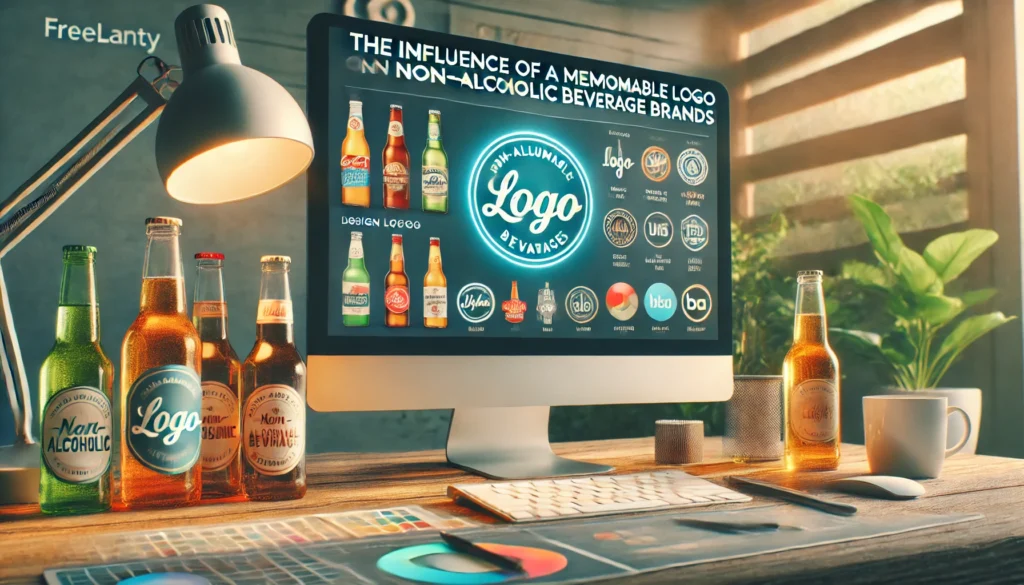







In the competitive landscape of non-alcoholic beverages, where health and lifestyle trends play a significant role, a memorable logo is more than just a brand identifier—it’s a key driver of consumer choice and brand loyalty. A well-crafted logo can differentiate your beverage from countless others on the shelf, convey your brand’s commitment to health and refreshment, and appeal directly to health-conscious consumers. This article explores the crucial influence of a memorable logo on non-alcoholic beverage brands, with insights into how logos can reflect health and lifestyle, case studies of successful brands, and practical tips for creating a logo that resonates with your target audience.
The non-alcoholic beverage market is crowded with a wide range of products, from sparkling waters and juices to energy drinks and wellness tonics. In such a saturated environment, a memorable logo is essential for standing out and catching the eye of consumers. Your logo serves as the first point of contact between your brand and potential customers, making it a critical tool for differentiation. A distinctive logo not only grabs attention but also conveys the unique qualities of your beverage, whether it’s the refreshing taste, health benefits, or innovative ingredients.
A well-designed logo can make your product instantly recognizable, helping it stand out among competitors on crowded shelves. This visibility is crucial for attracting new customers and encouraging repeat purchases, as consumers are more likely to choose a brand they recognize and trust.
Brand recognition is a key factor in driving consumer loyalty, and a memorable logo plays a central role in building this recognition. A logo that is consistently used across all marketing channels—from packaging and advertising to social media and promotional materials—helps to create a cohesive brand identity that consumers can easily identify. Over time, this recognition builds trust, making consumers more likely to choose your brand over others.
Moreover, a logo that resonates with consumers on an emotional level can foster a deeper connection with your brand, leading to increased loyalty. When consumers associate your logo with positive experiences, such as enjoying a refreshing drink or making a healthy choice, they are more likely to remain loyal to your brand and recommend it to others.
The visual identity of your brand, as conveyed through your logo, significantly influences how consumers perceive your product. A logo that effectively communicates the key attributes of your beverage—such as healthiness, refreshment, and quality—can enhance the overall perception of your product. For example, a logo that uses clean lines, vibrant colors, and modern typography might suggest that your beverage is fresh, contemporary, and health-focused.
On the other hand, a logo with a more traditional design might convey heritage, trustworthiness, and a commitment to quality. By carefully considering the elements of your logo design, you can shape how consumers perceive your brand and ensure that it aligns with their expectations and desires.
Color is one of the most powerful tools in logo design, particularly in the non-alcoholic beverage industry, where colors can evoke specific emotions and associations. For instance, green is often associated with health, nature, and wellness, making it a popular choice for brands that emphasize natural ingredients and health benefits. Blue can convey purity, refreshment, and tranquility, while bright colors like orange and yellow can evoke energy, vitality, and positivity.
Choosing the right color palette for your logo is essential in conveying the key attributes of your beverage and appealing to health-conscious consumers. The colors should not only reflect the essence of your product but also resonate with the emotions and aspirations of your target audience.
Typography is another critical element in logo design that can influence how your brand is perceived. The font you choose should align with the values and lifestyle of your target audience. For example, a clean, sans-serif font might appeal to modern, health-conscious consumers who value simplicity, clarity, and minimalism. On the other hand, a more decorative or script font might suggest tradition, craftsmanship, or a focus on indulgence.
The typography in your logo should be legible and visually balanced, ensuring that it complements the overall design and effectively communicates your brand’s message. By choosing typography that resonates with your audience, you can create a logo that not only looks appealing but also reinforces your brand’s commitment to health and wellness.
Symbols and imagery can add depth and meaning to your logo, making it more engaging and relevant to health-conscious consumers. Consider incorporating elements that reflect the health benefits of your beverage, such as leaves, fruits, water droplets, or other natural symbols. These images can help convey the idea of freshness, vitality, and wellness, making your logo more appealing to consumers who prioritize healthy living.
For example, a logo that features a water droplet might suggest hydration and refreshment, while a leaf could symbolize natural ingredients and sustainability. The key is to choose imagery that aligns with your brand’s values and the benefits of your product, helping to create a strong visual association between your logo and the lifestyle your brand promotes.
LaCroix has become a household name in the sparkling water market, thanks in part to its vibrant and distinctive logo. The logo features a bold, hand-painted script that gives it a playful and approachable feel, perfectly aligning with the brand’s image as a fun and refreshing alternative to sugary sodas. The use of bright, eye-catching colors and a dynamic design helps LaCroix stand out on store shelves, making it instantly recognizable to consumers. LaCroix’s logo effectively communicates the brand’s focus on fun, flavor, and refreshment, contributing to its widespread popularity.
Perrier, a brand synonymous with sparkling water, has a logo that exudes elegance and sophistication. The logo features a classic, serif font that conveys tradition and quality, while the use of green reflects the brand’s natural and refreshing qualities. The design is clean and refined, with subtle details that suggest effervescence and luxury. Perrier’s logo has become iconic in the beverage industry, symbolizing premium quality and a commitment to excellence. It effectively appeals to consumers who seek a touch of elegance in their everyday hydration.
Vitaminwater’s logo is a great example of how simplicity can be incredibly effective. The logo features a straightforward, sans-serif font that is both modern and easy to read, with a clean design that reflects the brand’s focus on health and wellness. The use of color is minimal yet impactful, with each product variant featuring a bold color block that corresponds to the flavor or function of the beverage. This simple yet effective design helps Vitaminwater communicate its key selling points—health benefits and refreshment—clearly and directly to consumers.
Innocent Drinks, known for its smoothies and juices, has a logo that perfectly encapsulates its brand ethos of simplicity, natural goodness, and a touch of whimsy. The logo features a charming, hand-drawn haloed face, which conveys the brand’s playful and approachable personality. The use of a soft, rounded font adds to the friendly and trustworthy feel of the brand. Innocent’s logo is highly recognizable and reflects the brand’s commitment to natural ingredients and ethical practices, making it a favorite among health-conscious consumers.
Before you begin designing your logo, it’s crucial to have a clear understanding of your target audience’s preferences and values. Consider what your ideal consumers prioritize—whether it’s health, sustainability, flavor, or convenience—and how your brand can align with those priorities. Your logo should reflect the aspirations and lifestyle of your target audience, making them feel that your product is the right choice for their needs.
Conducting market research and analyzing competitor logos can provide valuable insights into what resonates with your audience and how you can differentiate your brand in the market. By understanding your audience, you can create a logo that not only looks appealing but also connects with consumers on a deeper level.
Color and typography are two of the most important elements in creating a logo that appeals to health-conscious consumers. The colors you choose should convey the key attributes of your beverage, such as freshness, vitality, and natural goodness. For instance, green is often associated with health and nature, while blue can suggest purity and hydration. Bright colors like orange and yellow can evoke energy and positivity, making them ideal for beverages that promise refreshment and rejuvenation.
Similarly, the font you choose should align with your brand’s personality. A clean, sans-serif font can convey modernity and simplicity, while a more decorative or script font might suggest tradition or craftsmanship. The key is to create a harmonious design that communicates your brand’s commitment to health and wellness.
Incorporating imagery that reflects the natural and refreshing qualities of your beverage can make your logo more engaging and relevant to health-conscious consumers. Consider using symbols like leaves, fruits, or water droplets to convey the idea of freshness and vitality. These images can help create a strong visual association between your logo and the benefits of your product, making it more appealing to consumers who prioritize healthy living.
The imagery should be simple and easy to recognize, ensuring that it enhances rather than overwhelms the overall design. By choosing symbols that align with your brand’s values, you can create a logo that resonates with your target audience and reinforces your brand’s message.
Your logo will appear on a wide range of platforms, from product packaging and in-store displays to websites and social media profiles. It’s crucial to design a logo that is versatile and scalable, ensuring it looks great in all contexts. A simple, clean design is often the most effective, as it can be easily adapted to different sizes and formats without losing its impact.
Test your logo in various applications to ensure it remains clear, legible, and visually appealing in all formats, from small bottle labels to large digital banners. A versatile logo helps maintain a consistent brand image across all touchpoints, enhancing recognition and trust.
Once you have a logo design, it’s important to test it with your target audience to ensure it resonates and effectively communicates your brand’s message. Consider conducting focus groups or surveys to gather feedback on how well the logo reflects your brand’s identity and how it compares to competitors’ logos. Use this feedback to refine your design, making adjustments to elements like color, typography, or layout as needed.
A well-tested and refined logo is more likely to make a strong impact, helping you build a strong brand identity that attracts health-conscious consumers and drives sales.
Why is a memorable logo important for non-alcoholic beverage brands?
A memorable logo is important because it helps differentiate your brand in a crowded market, builds recognition and loyalty, and influences how consumers perceive your product. A well-designed logo can attract health-conscious consumers and convey the key attributes of your beverage, such as healthiness, refreshment, and quality.
What colors work best for non-alcoholic beverage logos?
The best colors for non-alcoholic beverage logos are those that convey freshness, vitality, and health. Green is often associated with nature and wellness, while blue can suggest purity and hydration. Bright colors like orange and yellow evoke energy and positivity, making them ideal for beverages that promise refreshment and rejuvenation.
How can a logo influence consumer perception?
A logo can influence consumer perception by conveying the quality, health benefits, and lifestyle appeal of your beverage. A well-designed logo creates a positive first impression, making consumers more likely to trust your brand and choose your product. Consistent use of the logo across all platforms also reinforces your brand’s identity, enhancing recognition and loyalty.
Should I include symbols in my non-alcoholic beverage logo design?
Including natural symbols, such as leaves, fruits, or water droplets, can add depth and make your logo more engaging and relevant to health-conscious consumers. These symbols can help communicate the essence of your beverage and create a strong visual association with your brand.
How do I ensure my logo stands out in a competitive market?
To ensure your logo stands out in a competitive market, focus on creating a unique, memorable design that reflects your brand’s values and resonates with your target audience. Consider innovative typography, distinctive color combinations, or subtle yet impactful symbols. The goal is to create a logo that is both visually appealing and reflective of your brand’s strengths.
Can a logo really impact the success of my non-alcoholic beverage brand?
Yes, a well-designed logo can significantly impact the success of your non-alcoholic beverage brand by enhancing brand recognition, building trust with consumers, and creating a strong, memorable brand identity. A compelling logo can attract health-conscious consumers and drive sales, contributing to long-term growth.
In the competitive world of non-alcoholic beverages, where health and lifestyle trends are key drivers of consumer choice, a memorable logo is essential for creating a strong and recognizable brand. By understanding your target audience, choosing the right design elements, and ensuring your logo is versatile and impactful, you can create a logo that not only stands out on shelves and online but also reflects the health and wellness values that resonate with consumers. Whether you’re launching a new beverage brand or rebranding an existing one, investing in a well-crafted logo is key to building a successful and enduring presence in the market.
Ready to take your project to the next level? At Freelanty, we connect you with talented freelancers who bring your vision to life. Contact us today and discover how we can help you succeed.